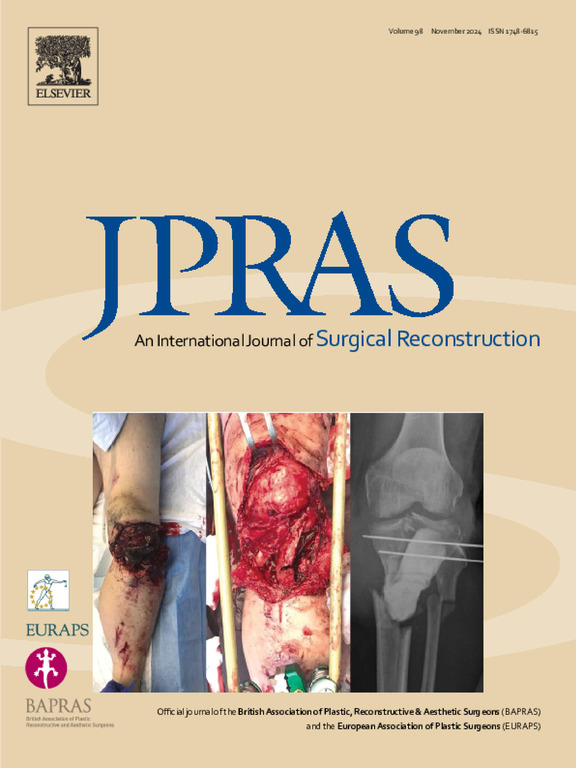基于NSQIP数据的DIEP皮瓣乳房重建术后再入院人工智能预测模型
IF 2.4
3区 医学
Q2 SURGERY
Journal of Plastic Reconstructive and Aesthetic Surgery
Pub Date : 2025-04-20
DOI:10.1016/j.bjps.2025.04.028
引用次数: 0
摘要
背景:腹下深层穿支(DIEP)皮瓣乳房重建术后的再入院是一个重大的医疗负担,但目前的风险预测方法在识别高危患者方面缺乏准确性。我们开发了一个机器学习模型,使用大型国家外科质量数据库来预测30天的再入院风险。方法回顾性分析来自美国外科医师学会国家外科质量改进计划数据库(2016-2022)的13312例DIEP皮瓣手术。建立了一个叠加机器学习模型,将患者人口统计学、合并症、手术特征和实验室值结合起来。模型性能通过准确性、精密度、召回率和F1评分进行评估。结果总再入院率为5.42%(723例)。叠置模型在再入院预测中准确率达到88%,召回率达到79%,受试者工作特征曲线下面积为0.8921 (95% CI: 0.853-0.927)。关键预测因素包括从手术到浅切口手术部位感染并发症的天数、手术时间、体重指数和术前白蛋白。结论该堆叠式机器学习方法对diep术后皮瓣再入院具有较强的预测能力,对识别高危患者具有较高的敏感性。该模型在术前风险分层和资源分配方面具有临床应用价值。实施可以使有针对性的干预策略有可能降低高危人群的再入院率。本文章由计算机程序翻译,如有差异,请以英文原文为准。
Artificial intelligence prediction model for readmission after DIEP flap breast reconstruction based on NSQIP data
Background
Readmissions following deep inferior epigastric perforator (DIEP) flap breast reconstruction represent a significant healthcare burden, yet current risk prediction methods lack precision in identifying high-risk patients. We developed a machine learning model to predict 30-day readmission risk using a large national surgical quality database.
Methods
This retrospective analysis examined 13,312 DIEP flap procedures from the American College of Surgeons National Surgical Quality Improvement Program database (2016–2022). A stacked machine learning model was developed incorporating patient demographics, comorbidities, operative characteristics, and laboratory values. Model performance was assessed using accuracy, precision, recall, and F1 score.
Results
The overall readmission rate was 5.42% (723 patients). The stacked model achieved 88% accuracy and 79% recall for readmission prediction with an area under the receiver operating characteristic curve of 0.8921 (95% CI: 0.853–0.927) on the test set. Key predictors included days from operation until superficial incisional surgical site infection complications, operative time, body mass index, and preoperative albumin.
Conclusion
This stacked machine learning approach demonstrates strong predictive capability for post-DIEP flap readmissions, with high sensitivity for identifying at-risk patients. The model’s performance suggests clinical utility in preoperative risk stratification and resource allocation. Implementation could enable targeted intervention strategies to potentially reduce readmission rates in high-risk populations.
求助全文
通过发布文献求助,成功后即可免费获取论文全文。
去求助
来源期刊
CiteScore
3.10
自引率
11.10%
发文量
578
审稿时长
3.5 months
期刊介绍:
JPRAS An International Journal of Surgical Reconstruction is one of the world''s leading international journals, covering all the reconstructive and aesthetic aspects of plastic surgery.
The journal presents the latest surgical procedures with audit and outcome studies of new and established techniques in plastic surgery including: cleft lip and palate and other heads and neck surgery, hand surgery, lower limb trauma, burns, skin cancer, breast surgery and aesthetic surgery.

 求助内容:
求助内容: 应助结果提醒方式:
应助结果提醒方式:


